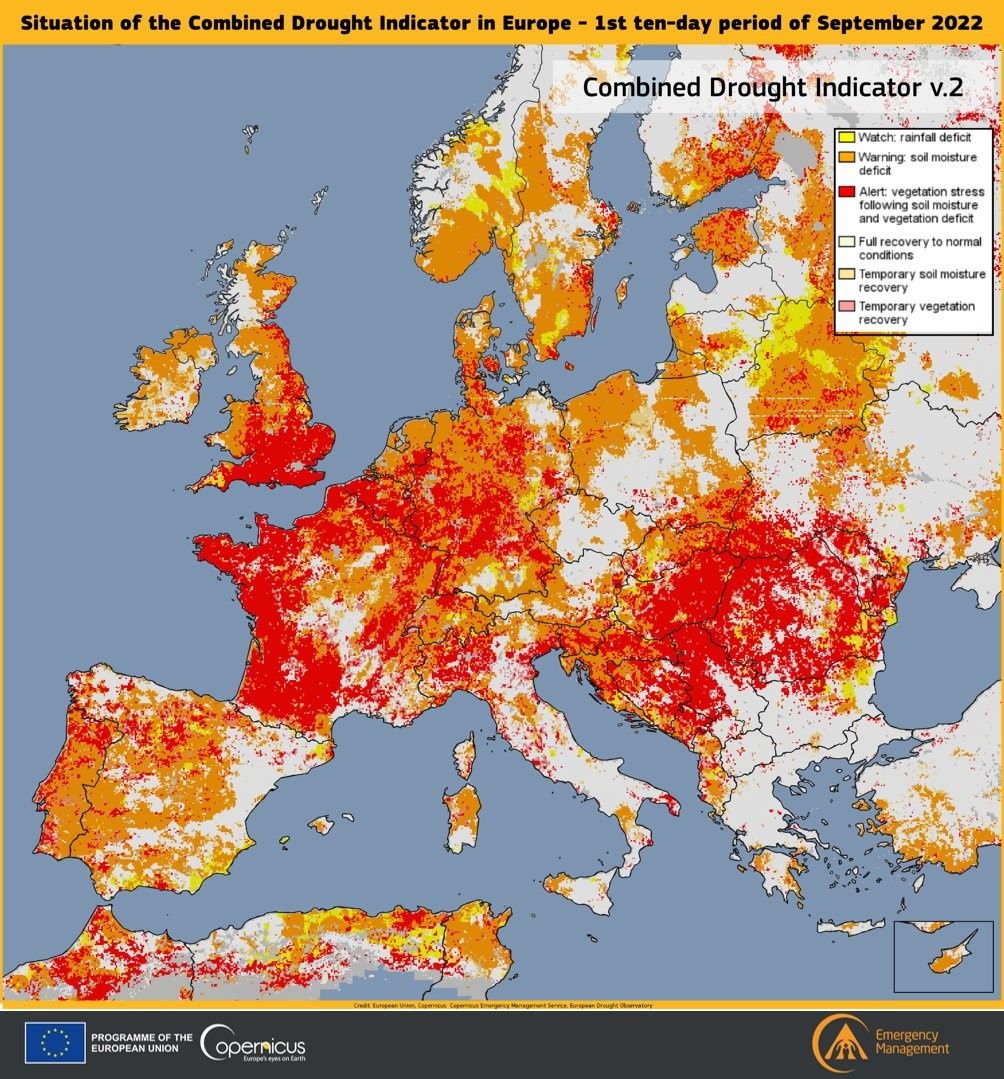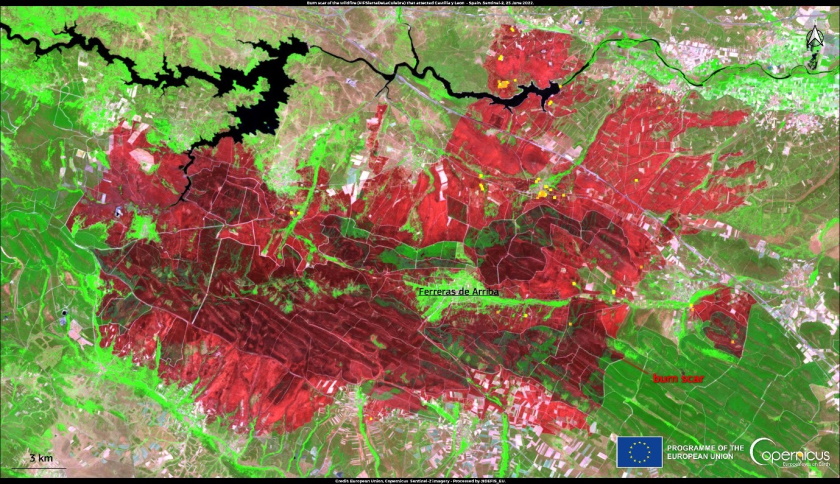
Photo: Copernicus
The year 2022 was marked by record droughts, heatwaves, forest fires, floods and a record low level of the Antarctic sea ice. Extremes – to put it in one word, according to a report by Copernicus, the European Union’s Earth observation programme.
The first days of 2023, including the warmest January 1 since measuring began, demonstrate that the trend of extreme climate and weather events is continuing.
Excess or deficit rainfall played a key role last year in several weather or climate extremes, with historic droughts threatening entire communities and affecting lives by causing food and water insecurity in different regions.
Thus, intense periods of drought hit the regions of Europe, East Africa, China and South America, while, as highlighted by Copernicus, epic floods threatened Australia and Pakistan, but also countries such as Chad, Sudan and Nigeria.
Prolonged droughts, together with record temperatures, contributed to an increase in fire risk, which peaked during the summer season in both Europe, the Mediterranean region, and the northwestern United States.
Drought: France’s scorched earth
The drought that hit Europe in 2022 could be the worst in 500 years. It can be attributed to a severe lack of rainfall, combined with a series of repeated heat waves that gripped Europe from May to October.
According to the Combined Drought Indicator, published by the European Drought Observatory (EDO), more than one fourth of EU territory was labeled with an alert mark at the beginning of September.

An example is France, where water levels in rivers and reservoirs were extremely low. It forced the country’s authorities to introduce measures to limit supply, so in July 2022, 90 out of 96 administrative departments were hit.
Copernicus compared the images that its Sentinel-3 satellites captured on July 21, 2021, and one year later, to show how dry the vegetation was.

Heatwaves: eight degrees warmer than average in Greenland
As reported in the July 2022 Climate Bulletin published by the Copernicus Climate Change Service, the month was one of the three warmest Julys globally so far and the sixth warmest in Europe. The image below shows the surface air temperature anomaly in Europe for July 2022.
As highlighted by the darkest-shaded red color, temperature anomalies reached peaks of plus four degrees Celsius in Italy, France, and Spain.

Greenland has recorded the highest average temperatures for September since 1979. Temperatures were eight degrees above the 1991-2020 average.
Sea ice extent: Arctic and Antarctic melting continues
Another extreme phenomenon is the alarming sea ice extent values reported by the Copernicus Climate Change Service. In June and July, the extent of the Antarctic sea ice reached its lowest monthly value in the 44 years of satellite data records, 9%, and 7% below average respectively.
The alarming trend continued throughout the year, with below-average sea ice concentrations in the Arctic and Antarctic even in the final months of 2022.
The average monthly Arctic sea ice extent in September 2022 reached 5.4 million square kilometers or 0.7 million (11%) below the 1991-2020 average. As for the Antarctic, sea ice extent averaged 18.5 million square kilometers or 0.6 million (3%) less than the 1991-2020 average.

Floods: nothing compares to the disaster in Pakistan
Several countries were affected by extreme floods in 2022, but none could be compared to the historic floods in Pakistan.
Exceptional monsoon rains struck the country during the summer, causing catastrophic flooding that affected more than 33 million people and caused at least 1,400 deaths, according to the report.
As shown in the collage below, composed of three images taken by the Copernicus Sentinel-3 satellites on September 26, 2021, and August 31 and September 10, 2022 (while the flooding was ongoing), large areas of the country remained flooded for weeks, especially in the Sindh region, which was one of the worst affected.

Wildfires: Spain suffered the most
According to the European Forest Fire Information Service (EFFIS), by December 17 more than 786,000 hectares have burnt in the EU, while a total of more than 2,700 forest fires were recorded. The area burned in 2022 is almost 2.5 times larger than the average in the period 2006-2021.
Spain was the hardest-hit European country, with more than 300,000 hectares scorched by fire. As seen in an image taken by one of the Copernicus Sentinel-2 satellites on June 25, a catastrophic fire has ravaged the province of Zamora, in the Castilla y León region.

On July 23, 2022, a wildfire broke out on the popular tourist hotspot of the island of Lesbos in the Aegean Sea in Greece.
Sea temperatures: the third year of the La Niña phenomenon
Although not directly linked to climate change, the third consecutive year of the La Niña phenomenon has contributed to extreme weather events in several parts of the world.
In 2022, precipitation patterns in many regions of the world were typical of La Niña episodes: drier than normal conditions in Patagonia, South America and southwestern North America, as well as in East Africa.
The visualization below shows the characteristic negative thermal anomaly in the Pacific Ocean recorded by the Copernicus Marine Environment Monitoring Service on September 13.

Another extreme event last year was the marine heatwave that affected the Mediterranean Sea in the summer. Sea surface temperature anomalies reached peaks of five degrees above average in parts off the Italian northwestern and French southeastern coasts.


















Be the first one to comment on this article.